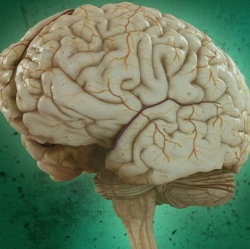
Researchers show how synapses are lost early in Alzheimer’s disease and demonstrate that the process starts, and could potentially be halted, before telltale plaques accumulate in the brain. Their work, suggests new therapeutic targets to preserve cognitive function early in Alzheimer’s disease.
Led by Beth Stevens, PhD, and Soyon Hong, PhD, of Boston Children’s F.M. Kirby Neurobiology Center, the researchers show in multiple mouse models of Alzheimer’s that mechanisms similar to those used to "prune" excess synapses in the healthy developing brain are wrongly activated later in life. By blocking these mechanisms, they were able to reduce synapse loss in the mice.
Currently, there are five FDA-approved drugs for Alzheimer’s, but these only boost cognition temporarily and do not address the root causes of cognitive impairment in Alzheimer’s. Many newer drugs in the pipeline seek to eliminate amyloid plaque deposits or reduce inflammation in the brain, but the new research suggests that Alzheimer’s could be targeted much earlier, before these pathologic changes occur.
"Synapse loss is a strong correlate of cognitive decline," says Stevens, assistant professor in the Department of Neurology at Boston Children’s, senior investigator on the study and a recent recipient of the MacArthur "genius" grant. "We’re trying to go back to the very beginning and see how synapse loss starts."
"Understanding a normal developmental process deeply has provided us with novel insight into how to protect synapses in Alzheimer’s and potentially a host of other diseases," says Stevens, noting that synapse loss also occurs in frontotemporal dementia, Huntington’s disease, schizophrenia, glaucoma and other conditions.
In the Alzheimer’s mouse models, the team showed that synapse loss requires the activation of a protein called C1q, which "tags" synapses for elimination. Immune cells in the brain called microglia then "eat" the synapses, similar to what occurs during normal brain development. In the mice, C1q became more abundant around vulnerable synapses before amyloid plaque deposits could be observed. When Stevens and colleagues blocked C1q, a downstream protein called C3, or the C3 receptor on microglia, synapse loss did not occur.
"Microglia and complement are already known to be involved in Alzheimer’s disease, but they have been largely regarded as a secondary event related to plaque-related neuroinflammation, a prominent feature in progressed stages of Alzheimer’s," notes Hong, the Science paper’s first author. "Our study challenges this view and provides evidence that complement and microglia are involved much earlier in the disease process, when synapses are already vulnerable, and could potentially be targeted to preserve synaptic health."
